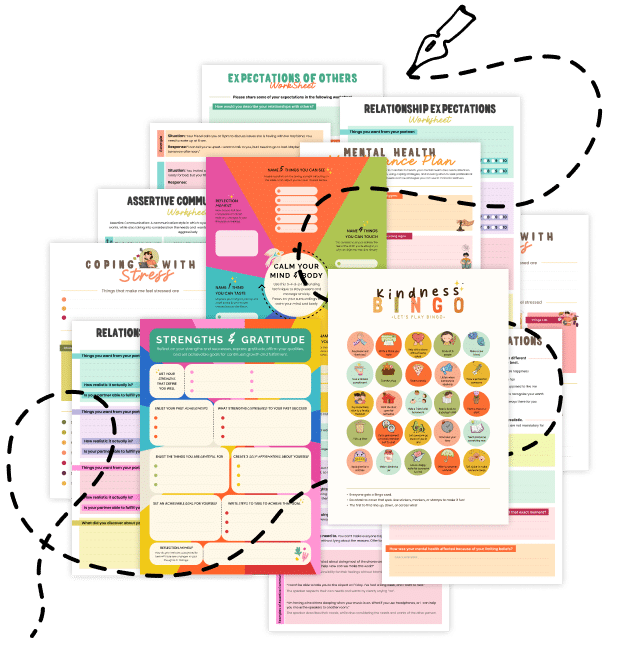20 Things About The Path of Least Mental Resistance
Enhance your decision-making and creative problem-solving by understanding the Path of Least Mental Resistance—what it is, why it matters, and how it influences the way you think and act. Discover how choosing the easiest cognitive route can both save energy and sometimes limit your growth, and learn strategies to strike a balance between mental ease and active challenge.
1. What Is The Path of Least Mental Resistance?
It refers to the natural tendency of the mind to follow the easiest or most habitual route when processing information or solving problems.
2. A Natural Cognitive Shortcut
Your brain often opts for the simplest solution that requires the least amount of mental effort, saving energy for more demanding tasks.
3. Efficiency vs. Creativity
While it can boost efficiency by reducing cognitive strain, relying solely on this path may stifle creativity and limit innovative thinking.
4. The Role of Habit
Habits and routine thought patterns guide you along this path, making familiar approaches feel effortless and automatic.
5. Mental Energy Conservation
Choosing the path of least resistance helps conserve mental energy, which can be beneficial when you’re fatigued or need to prioritize other tasks.
6. Impact on Decision-Making
This tendency can lead to quick decisions that may not always be the most thoughtful or optimal, especially in complex situations.
7. Risk of Oversimplification
By defaulting to simple solutions, you might overlook important details or alternative perspectives that require deeper analysis.
8. Cognitive Ease and Bias
When things feel easy, you’re more likely to trust them—even if they are superficial or biased—contributing to a lack of critical evaluation.
9. A Double-Edged Sword
While it can make routine tasks more manageable, overreliance on mental shortcuts can hinder learning and growth.
10. Role in Problem-Solving
In some cases, choosing the easiest route works well, but for complex problems, it might be necessary to invest extra effort to find innovative solutions.
11. Effects of Stress and Fatigue
Under stress or when tired, your brain is more likely to default to the path of least mental resistance, sometimes at the expense of accuracy or creativity.
12. Balancing Act
Striking a balance between conserving mental energy and engaging in deeper, more challenging thought processes is key to optimal performance.
13. Opportunity for Growth
Recognizing when you’re taking the easy route can be an opportunity to challenge yourself and explore more complex solutions.
14. Encouraging Critical Thinking
Actively questioning simple answers and exploring alternatives can help you overcome the tendency to rely solely on mental shortcuts.
15. Developing Cognitive Flexibility
Practicing strategies that force you to consider multiple perspectives can expand your cognitive abilities and enhance problem-solving skills.
16. The Role of Mindfulness
Mindfulness practices can help you become aware of your default thought patterns, allowing you to consciously decide when to challenge the easy path.
17. Building Resilience
Pushing against the path of least resistance can build mental resilience, making it easier to tackle difficult tasks over time.
18. When to Embrace It
There are moments when the path of least resistance is beneficial—such as routine tasks or when conserving energy is necessary for bigger challenges.
19. Being Proactive
Regularly evaluate your decision-making process to ensure you’re not always opting for the easiest option, especially in important situations.
20. Related Topics to Explore
- Cognitive Load Theory – Learn how managing mental workload can improve performance.
- Heuristic Traps – Discover common mental shortcuts that can lead to errors in judgment.
- Cognitive Flexibility Games – Engage in activities that challenge and improve your adaptability.
- Default Mode Network – Explore how the brain’s resting state influences cognitive ease.
- Self-Imposed Cognitive Limitations – Identify and overcome barriers that prevent you from engaging in deeper thought.
Quick Tips to Boost Your Cognitive Engagement
- Pause and Reflect: Before settling on an easy solution, take a moment to ask, “Is there a more innovative or effective approach here?”
- Challenge Your Assumptions: Regularly question your default thought patterns by exploring alternative viewpoints or strategies.
- Mix Routine with Novelty: Balance your day with tasks that require routine execution and others that push you to think outside the box.
- Practice Mindfulness: Engage in mindfulness exercises to heighten your awareness of when you’re opting for mental ease over depth.
- Set Specific Goals: Identify areas where a deeper, more thoughtful approach is needed and deliberately invest extra cognitive effort there.
Embrace these insights and tips to harness the power of conscious decision-making, empowering you to choose when to take the path of least mental resistance and when to push for deeper, more creative solutions!
Need a Professional Workbook Design Service?
From worksheets to activities, discover thoughtfully designed tools to support your mental health journey.


